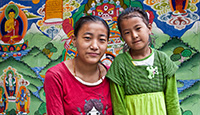Duble

Slope with part of the houses of Duble
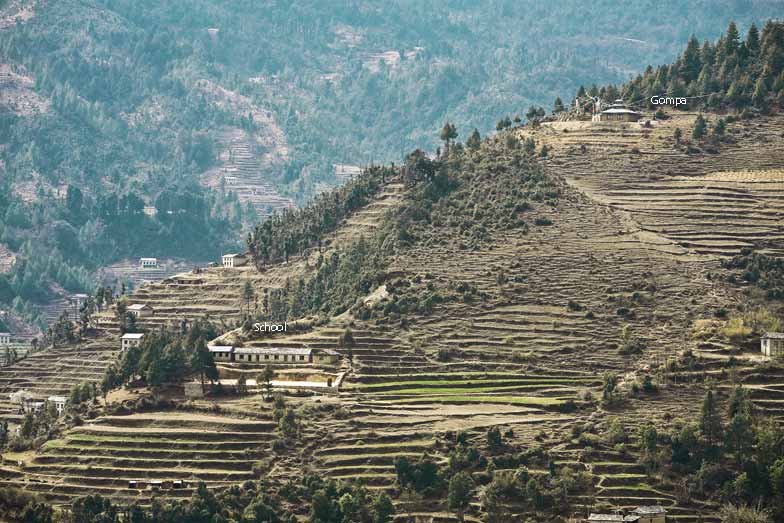
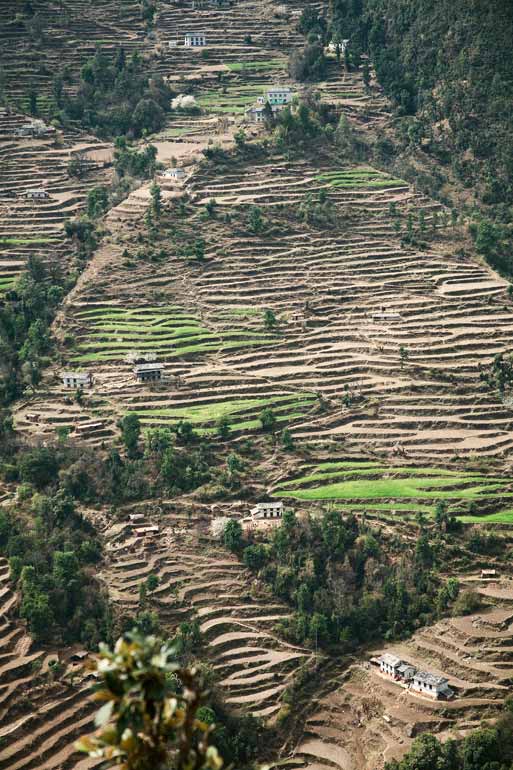 Duble is a typical mountain village in the foothills of the Himalayas at an altitude of about 2300 meters. It is hard to see that it is a village because there is no centre with a market, monastery or shop. Just a few houses, some 45 in all, dotted on the slopes of the hills. It is in the Okhaldhunga district of the province Sagarmatha (Everest). A few days marching to the north is the first part of the Everest trekking route, namely the Jiri - Lukla section.
Duble is a typical mountain village in the foothills of the Himalayas at an altitude of about 2300 meters. It is hard to see that it is a village because there is no centre with a market, monastery or shop. Just a few houses, some 45 in all, dotted on the slopes of the hills. It is in the Okhaldhunga district of the province Sagarmatha (Everest). A few days marching to the north is the first part of the Everest trekking route, namely the Jiri - Lukla section.
Distances to some better known places, as the crow flies, are shown below:
Jiri - 28 Km.
Lukla airport - 40 Km.
Phaplu airport - 27 Km.
Rumjatar airport - 18 Km.
The population comprises Sherpa and Tamang people, but also some Dalit are living there. They largely depend on agriculture. They manage to grow just enough for their own needs. Selling produce on the market is an exception. Their religion is Buddhism. Most young people work as seasonal labourers, predominantly as porters in the trekking business. That we want to help the people from this particular village and surrounding area is quite accidental. We just happened to get to know some of the people there during our various treks in Nepal.
We discovered that while Nepal receives considerable amounts in foreign aid, villages like Duble largely miss out because they are not along a trekking route and can be reached only on foot. Most of the aid they receive comes in the form of bonuses from the people they work for as guide, cook or porter. Since the Dutch organisation HT Wandelreizen does much of their hiring in this region, virtually all aid to the area comes from Dutch sources.
Examples of past aid projects are: a water-driven flour mill, blankets for the elderly and the provision of toilets.
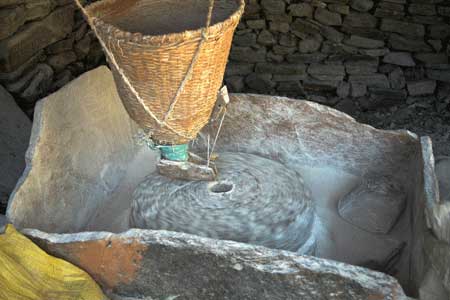
water-driven flour mill
We heartily recommend the financial support for water-powered flour mills. Such mills make the daily task of flour milling, which is the duty of the women of the village, far less laborious. With their old hand mills they need to work for hours each evening to produce sufficient flour.
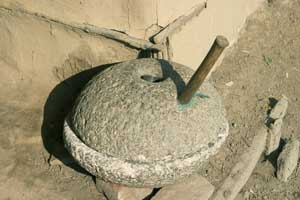
Mill stones at a Tharu house in Chitwan
The same mills are being used in Okhaldhunga.
When talking to Nepalese people about their way of living it helps to know how their system of government operates.
The country is sub-divided into Developmental Regions, which are sub-divided into Zones. The Zones comprise Districts and the districts Village Development Areas (VDAs), which are governed by Village Development Committees (VDCs).
A typical VDA consists of 9 wards whereby the wards are governed by Ward Committees chaired by the members of the VDCs.
There are at present:
- 5 Developmental Regions (Far West, Mid West, West, Central and East Region),
- 14 Zones,
- 75 Districts and
- 3915 VDCs.
A village is typically classed either as a VDA or as a ward. The term ward is usually replaced by the appropriate VDC-number combination. For instance, Duble is VDC-9 of Khijifalate (VDC/VDA) in the District Okhaldhunga, in the Zone Sagarmatha, in the Developmental Region called East Region.
The "Sherpaland" trek of HT Wandelreizen goes through this area.
Since all our aid efforts are aimed at the people of Duble and surrounding area I would like to introduce some of these people to you.
